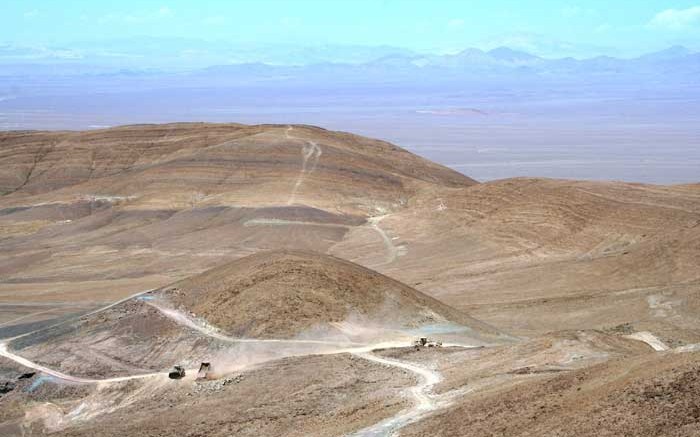Capstone Mining (TSX: CS; US-OTC: CSFFF) has published a promising feasibility study for its Santo Domingo iron oxide–copper–gold project in Chile’s Region III, showing it could churn out an average 248 million lb. copper in the first five years of full production at C1 cash costs of US49¢ per lb., net of by-product credits.
Over the project’s estimated 18-year life, those costs are expected to fall to negative US6¢ per lb. due to large magnetite iron and gold by-product credits. On a co-product basis, the life-of-mine cost is US$1.50 per lb. copper and US$43 per tonne of magnetite iron concentrate.
“This cost profile will clearly position Santo Domingo as one of the lowest-cost copper mines in the world,” Darren Pylot, the company’s CEO, said on a conference call.
The study envisions Capstone developing two open-pit mines at Santo Domingo and installing a copper–iron concentrator to process 60,000 to 65,000 tonnes per day.
Planned infrastructure for the project includes a tailings storage facility, an iron-concentrate pipeline and a seawater supply pipeline, as well as a port containing a magnetite filter plant and a copper-storage building.
But the cost to build Santo Domingo is a hefty US$1.7 billion. This figure includes a 16.5% contingency, but not the US$368 million in estimated sustaining costs.
Gregg Bush, Capstone’s chief operating officer, says the firm took its time to complete the study to mitigate risks, particularly around the capital requirements. It had two independent leading EPCM companies — with mining experience in Chile — review the project’s initial cost estimate. Both parties confirmed that the US$1.7-billion estimate was well within the accuracy range for feasibility studies.
Capstone is working with Korea Resources Corp. (Kores), the project’s 30% owner, to help secure project financing. It is also looking at selling all or part of the proposed port to manage costs. Capstone holds the remaining 70%.
“So while we are not really in the position at this point to provide any definitive information, we can reaffirm that our financial commitment to the project will be tailored to achieve the risk-management objectives,” James Slattery, the company’s chief financial officer, said on the call.
Despite the high price tag, the project’s economics appear favourable. Santo Domingo has an after-tax net present value of US$797 million at an 8% discount rate, and generates a 17.9% after-tax internal rate of return (IRR). Payback should occur in four years.
Assuming the firm secures US$1 billion in debt, the study shows that the after-tax IRR jumps to 27.3%.
“The IRR increases considerably as leverage is applied to the project,” Pylot said. “So we are comfortable with the results of the study, the process we used to complete it and the approach we are taking for the next stage of the project.”
Chief operating officer Bush says Capstone has three “stage-gates” where it will assess the project’s progress and budget before moving ahead.
The first gate assumes the company will win approval of its environmental-impact assessment by April 2015. Leading up to that, Capstone intends to secure a power-purchase agreement. The second gate requires advancing the project engineering, at 25%, to between 60% and 65%, along with updating the cost estimate in August 2015. The third gate requires completing the engineering and providing a final cost estimate in February 2016.
Pylot stresses that while the feasibility study confirms the project’s potential, the company will take a disciplined approach in developing Santo Domingo.
“We will not allocate significant capital towards Santo Domingo unless and until it makes sense for Capstone and its shareholders,” he said.
Capstone and Kores have approved a 2014 budget for the project of US$29.8 million, where Capstone’s 70% share would be US$20.9 million.
After the feasibility news broke on June 5, the firm’s shares were up 2% to $2.67.


Be the first to comment on "Capstone’s Santo Domingo feasibility shows potential"